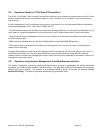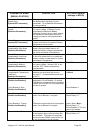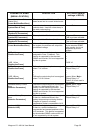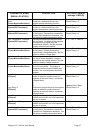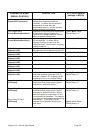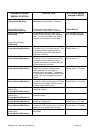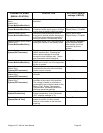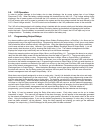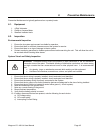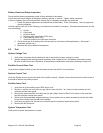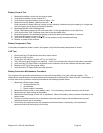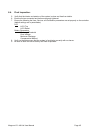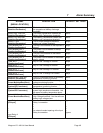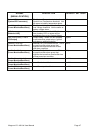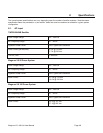Magnum VS –48 Vdc User Manual Page 41
5.6. LVD Operation
In order to prevent damage to the battery due to deep discharge, the dc power system has a Low Voltage
Disconnect (LVD). When the battery voltage reaches the threshold set by the LVD 1 Trip Voltage setting during
discharge, the dc power system will activate the LVD contactor to disconnect the battery from the system. The
LVD will remain open until ac power is restored to the system and the bus voltage reaches the level defined by the
LVD 1 Reset Voltage variable. The LVD control can be disabled on the LVD parameters screen in the controller.
The LVD will not be energized until a battery string is installed with the correct polarity and the battery disconnect
switch is turned on. This will prevent the battery from being hooked up backwards and damaging the rectifiers
and/or the loads. Once the battery is connected correctly and the LVD is closed, the LVD will open only in low
voltage situations. The battery connections are to be used for the battery only.
5.7. Programming Output Relays
Any alarm condition such as System High Voltage Alarm, Battery Discharge Alarm, or Rectifier 1 of n Alarm can be
programmed to any of the eight output relays. Programming alarms to the output relays 1-6 will give a much better
idea of what the failure is before actually visiting the site. Using the default programming, over twenty conditions
could cause activate a minor relay. However, if you program Battery Discharge Alarm to Output Relay 1, you will
know exactly what the alarm is just by knowing that output relay 1 is on. The network management card also
displays the output relays individually and can be set up to e-mail these messages.
Output relay mapping options are Ignore, Major, Minor, and Output Relay 1-6. To program the alarm to an output
relay find the alarm setup screen for the desired alarm from the table in Figure 5.5-1. The Ignore setting will not
send an alarm to any display or relay. Programming the alarm to Major, Minor or Output Relay 1 will send the
alarm to the relay output connector on the back of the plant, turn on the appropriate front panel LED, and will send
the alarm to the network management card. Programming the alarm to Output Relay 2-6 will not send the alarm to
the relay output connector on the back of the plant, but will turn on the front panel Out Relay LED, and will send the
alarm to the network management card. For instance, go to the Batteries / Parameters screen and program Battery
Discharge Alarm to Output Relay 1. When the battery discharge current goes above the default setting of 5 Amps,
the alarm will come on, the Out Relay contact will energize, the front panel Out Relay LED will come on and the
network management card will report Output Relay 1 is on.
Most alarms are originally assigned to a minor or major relay. Usually it is desirable to keep the minor and major
assignments when programming to the output relays. To do this, go to the output relay-programming screen and
map the relay back to the desired minor or major relay. For instance, go to the I/O / Output screen and program
Relay 1 to Minor Relay. When the battery discharge current goes above the default setting of 5 Amps, the alarm
will come on, the Out Relay contact will energize, the Out Relay LED will come on, and the network management
card will report Output Relay 1 is on. In addition, the Minor Relay contact will energize, the front panel Minor LED
will come on, and the network management card will report the Minor Relay is on. With this scheme of
programming, you will know that you have a minor alarm and specifically that the batteries are discharging.
Out Relay 1-6 can be renamed using the Relay Alias setup screen. Each relay name can be up to sixteen
characters in length. This name will not appear in the alarm summary, but will appear in the messages generated
by the network management card. This can be used to give specific information on the exact nature of the active
alarm. Using the example above, if you use the default programming, the message “A minor relay in the power
plant has been activated.” will be reported. Using the relay mapping and aliasing you could get the additional
message “An output relay (1; Batt Discharge) for the power plant has been activated.”



